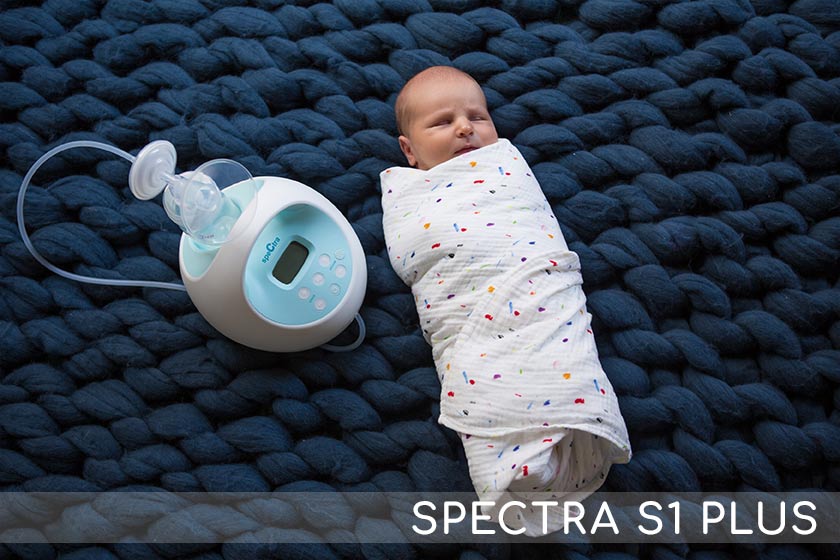Melissa Portunato MPH, IBCLC, RLC
If you’re breastfeeding and not quite ready to start growing your family, you might be considering birth control. Most birth control methods are not harmful to your breastfed baby, but some forms of contraceptives are linked to low milk supply. Read on to learn the safest and most effective forms of birth control to prevent pregnancy and protect your milk supply.
Natural Family Planning
Lactational Amenorrhea Method (LAM) is exclusively breastfeeding as a temporary form of postpartum birth control. Though using LAM as birth control is often disregarded or presented with conflicting information, LAM has proven to be 98-99.5% effective at preventing pregnancy. For LAM to be the most effective, the following criteria must be met:
✔ Baby is less than six months old
✔ Menstrual periods have not yet returned
✔ Baby is breastfeeding at the breast on cue (both day & night) and gets nothing but breastmilk or only token amounts of other foods
LAM has been studied within the nursing-at-breast population; therefore, exclusively pumping may not have the same pregnancy protection as direct breastfeeding/nursing at the breast. In addition, one study showed that working mothers, separated from their babies and exclusively pumping milk to provide 100% breastmilk, had a higher pregnancy risk (5.2%) during the first six months. In summary, mothers that are either part-time pumping when away from their baby or exclusively pumping need to use an alternative method of contraception.
Barrier Methods
Barrier methods, like condoms, prevent sperm from entering the vagina and are the only form of birth control that prevents STDs. They can come in different forms for both males/females, non-latex/latex, and lubricated/nonlubricated. When used “correctly” from start to finish, condoms can be 98% effective at preventing pregnancy. Spermicide does not contain hormones and can be applied in combination with condoms for added protection against pregnancy.
Non-hormonal IUD
The copper IUD is 99% effective at preventing pregnancy, and it’s hormone-free. It’s an excellent option for people who prefer non-hormonal birth control or can’t use hormones for medical reasons. The most common side effects with a non-hormonal IUD are reports of pain and heavier periods, with symptoms typically subsiding after 3-6 months. Talk to your doctor about any concerns you might have to make an informed decision.
Hormonal Birth Control
Progestin-only birth control can come in different forms: oral (mini pill), injection, IUD, or implant. Mothers that have started too soon postpartum have reported issues with milk supply when using progestin-only contraception. If hormonal birth control is desired or needed, introduction after 6-8 weeks postpartum can prevent problems with milk supply. Before deciding on a long-lasting progestin-only method, try an oral form to determine if it affects your milk supply. You can always stop taking the pill and continue meeting your breastfeeding goals.
The progestin-only birth control pill is not considered safe for all mothers. In addition, estrogen-containing contraceptives have been linked to low milk supply and a shorter duration of breastfeeding regardless of the baby’s age. Always consult your healthcare provider before starting hormonal birth control.
| Effectiveness of Birth Control Methods Number of Pregnancies per 100 Women |
| Method | Perfect Use | Typical Use |
| LAM | 0.5 | 2.0 |
| Mirena® IUD /Progestin – Only | 0.1 | 0.1 |
| Depo-Provera®/Progestin Only Injection | 0.3 | 3.0 |
| The Pill / POPs/Progestin Only Oral | 0.3 | 8.0 |
| Male condom | 2.0 | 15.0 |
| Diaphragm | 6.0 | 16.0 |
| * Adapted from information at plannedparenthood.org. |
Got questions about birth control and breastfeeding? Message us at ibclc@spectrababyusa.com. We can help you navigate the evidence to make the best decision for you and your beautiful family!
Sources:
Valdés, V., Labbok, M. H., Pugin, E., & Perez, A. (2000). The efficacy of the lactational amenorrhea method (LAM) among working women. Contraception, 62(5), 217–219. https://doi.org/10.1016/s0010-7824(00)00170-0
Bonyata, K. (2018, March 17). Breastfeeding and fertility • kellymom.com. KellyMom.com. Retrieved February 7, 2022, from https://kellymom.com/ages/older-infant/fertility/
ABM Clinical Protocol #13: Contraception during … (n.d.). Retrieved February 7, 2022, from https://abm.memberclicks.net/assets/DOCUMENTS/PROTOCOLS/13-contraception-and-breastfeeding-protocol-english.pdf

